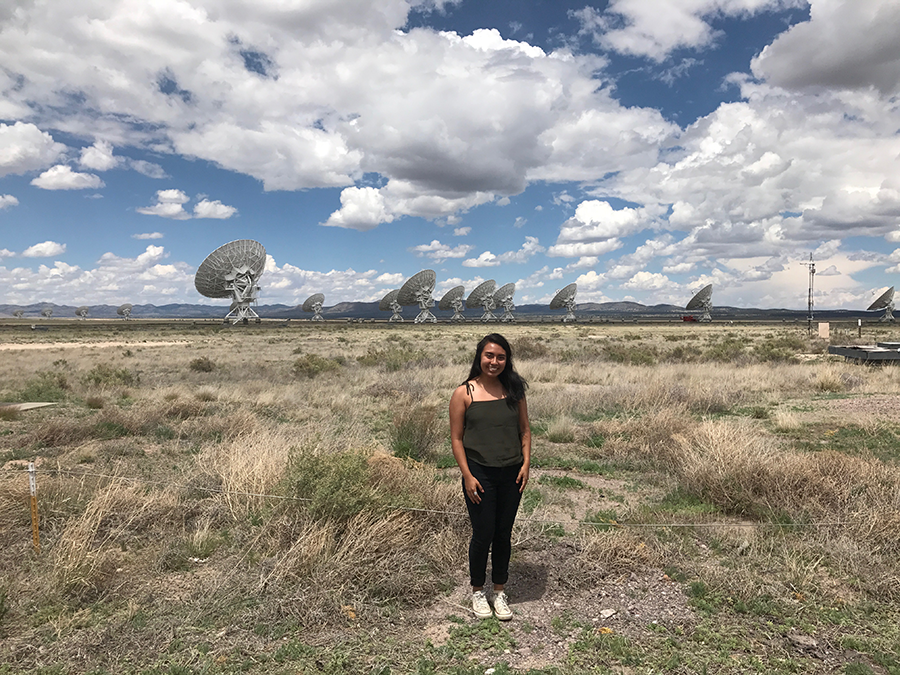The Far Side of the Galaxy

Growing up in Cicero—a Chicago suburb that shares a border with the city’s Lawndale neighborhood—Theresa Melo never really thought about going to college. Now, she’s a senior at Agnes Scott College, just outside Atlanta, using radio waves to see through the murky parts of our galaxy.
Of course, this change of heart didn’t happen overnight. Theresa’s family moved back to Chicago (where she had been born) so she could attend high school in the city, and as a sophomore, she transferred to Chicago Bulls College Prep. She also started volunteering at the Adler to satisfy her new school’s community service requirements—and to get a look inside the museum, which she had walked past many times with her family but never actually visited.
Inside, she found a whole Universe of mysteries and wonders. But that wasn’t all. “The Adler added real people who were accessible and wanted to educate others about the science,” she says. “I began to see the museum space as another learning space where I can openly ask questions in exchange for fruitful answers.” When her volunteer stint ended, she quickly found a home in the Adler’s teen programs, first as a summer camps intern, then as an astrojournalist intern and a member of the Youth Leadership Council—a small group of students who consult on new projects, design and lead programs for their peers, and advocate for teens in the museum.
Before she knew it, she was headed off to college—700 miles away, in Atlanta.
“At first, I was dealing with the adjustment from going to school out of state, being in a smaller city than Chicago, and just being away from family,” she says. As Theresa was getting her bearings, making new friends, and finding a local source of Chicago-style pizza, she sought out an astronomy professor—Scott DuPree, who was also the director of the campus observatory. She wondered what his project was about and asked him what it meant to be a researcher.
She’s been working on his research team ever since. Now, she’s the one explaining the project.
“This project consists of answering broadly what physical processes lead to a massive star forming by looking at the changes in the morphology of massive star forming region W49A, which is on the other side of the Milky Way Galaxy and is the most luminous star forming region in our galaxy,” she says. “We use radio astronomy to look through the plane of the Milky Way and digest what we would not be able to see with our own eyes.”
When she’s not peering into the early lives of stars on the far side of the galaxy, Theresa is getting ready to explore another uncharted corner of the Universe: graduate school. “I am currently in the process of preparing my applications!” she says. “I hope to stay in radio astronomy and star formation, so I am currently looking at universities [that] offer these.” In the meantime, she highly recommends the Adler to students who want to understand their Universe a little better.
“I am forever grateful for my experience, the people I met, and all I learned about our astronomical past and future,” she says. “The Adler teen programs opened up for me a new world that has now become my career path. In general, teen programs are one of the first steps in getting to know what questions you have about the Universe and how you can best answer them for yourself—whether that’s in the arts, sciences, or whatever you want to pursue.”






